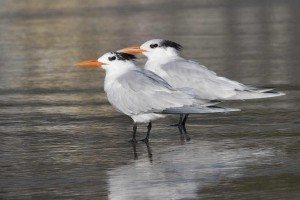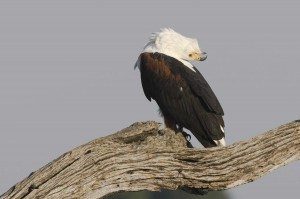Learning to be a bird photographer
By Bob Lewis
I took a class with bird photographer Artie Morris in San Diego some years ago. His co-leader was Todd Gustafson, a well-known African safari photographer. Todd had some guidelines for being a good nature photographer, which went something like this:
- Have good equipment. (That doesn’t mean the most expensive or latest-version cameras. It means equipment that you can depend on, that will do what you want it to do.)
- Know your equipment. (How to set the camera down a stop, where the autofocus button is, where to stand to be close but not inside the close-focusing capability of your lens, etc.)
- Have a plan. What do you hope to shoot: Shorebirds, migrants, heron nests, etc.?
- Know where to go to find your subject – and know when to go so the lighting and tide and wind direction are right.
- Know your subject. Does it feed in the mud or sand? Will it defend a territory? Is it courting or delivering food to a nest? Is it likely to offer a wing-flap when preening? In other words, spend some time learning the behavior of your subject so you can anticipate behaviors.
- Be prepared. Expect the action or behavior you are hoping to capture, and anticipate the exposure requirements of the shot. Watch for warning signs, like chicks’ agitation or beak opening to presage arrival of an adult with food.
- Be quiet, move slowly, be patient. It may take time for the bird to arrive, and you may need to reposition yourself to get the right angle with the light, or arrival of the bird.
- Push the button.

Know where to go: We wanted the warm feeling of evening light, but to be “up light” from these Royal Terns, we stood in the ocean, positioned so our shadows were near but not on the birds. We needed an ebb tide to provide them with a roosting place. Photo by Bob Lewis.
These are all good guidelines, and although I probably don’t always follow them, I usually wish I had. But Todd didn’t talk about all the post-button-push activity, like downloading your image, archiving it in Lightroom, developing it in Photoshop, posting it on Flickr, printing at Costco or matting and framing.
And he didn’t mention the most important issue of all – why are you taking the picture, and what do you plan on doing with it? The requirements for a good blog photo are different from those for a large format print or a projected image. A little planning will avoid disappointment later on.

When you’re starting, photographing with someone who has some experience is worth gazillions. My dad was a photographer and lithographer, so I was around cameras as a kid. But digital photography is a whole new world compared with film. Equipment with image stabilizing, instant feedback to see if you captured your subject, post processing that allows exposure adjustments, color temperature fine tuning, and contrast and saturation control are all amazing improvements that make today’s photography so much fun, and provide amazing results.
I was lucky to meet Golden Gate Bird Alliance member Eleanor Briccetti photographing in a marsh about 10 years ago. She’s a skillful technician and a gifted artist – resulting in beautiful pictures. She was also very generous with her knowledge, so I took what opportunity there was to hang around and copy what she did.

From Eleanor I learned that digiscoping (using a small camera and a spotting scope) wasn’t going to easily provide the action images that I wanted. So I acquired some equipment. Generally my photo kit, which is optimized for bird photography, consists of the following:
- Two camera bodies (Canon 7D and 1D MK III)
- A 500mm f4.0 Canon lens
- A 100-400mm f5.6 Canon zoom lens
- Two multipliers, 1.4x and 2x
- A Canon 580II flash, with a Better Beamer attachment
- A tripod equipped with a Wimberly head
- Extra batteries, chargers, memory cards.
If the objective is birds in flight, I will also take along a 400mm f4 lens to hand hold. Note that Nikon also offers similar equipment of similar quality. But you have to choose one manufacturer.
I think for starting out, the 100-400 zoom lens is very versatile and gives some quite good images, especially when paired with the 7D body. That’s all you need – that, and lots of practice!
———————-
Bob Lewis is a GGBA board member, a birding instructor and field trip leader, and an award-winning bird photographer. His photographs can be seen at http://www.flickr.com/photos/boblewis/.
